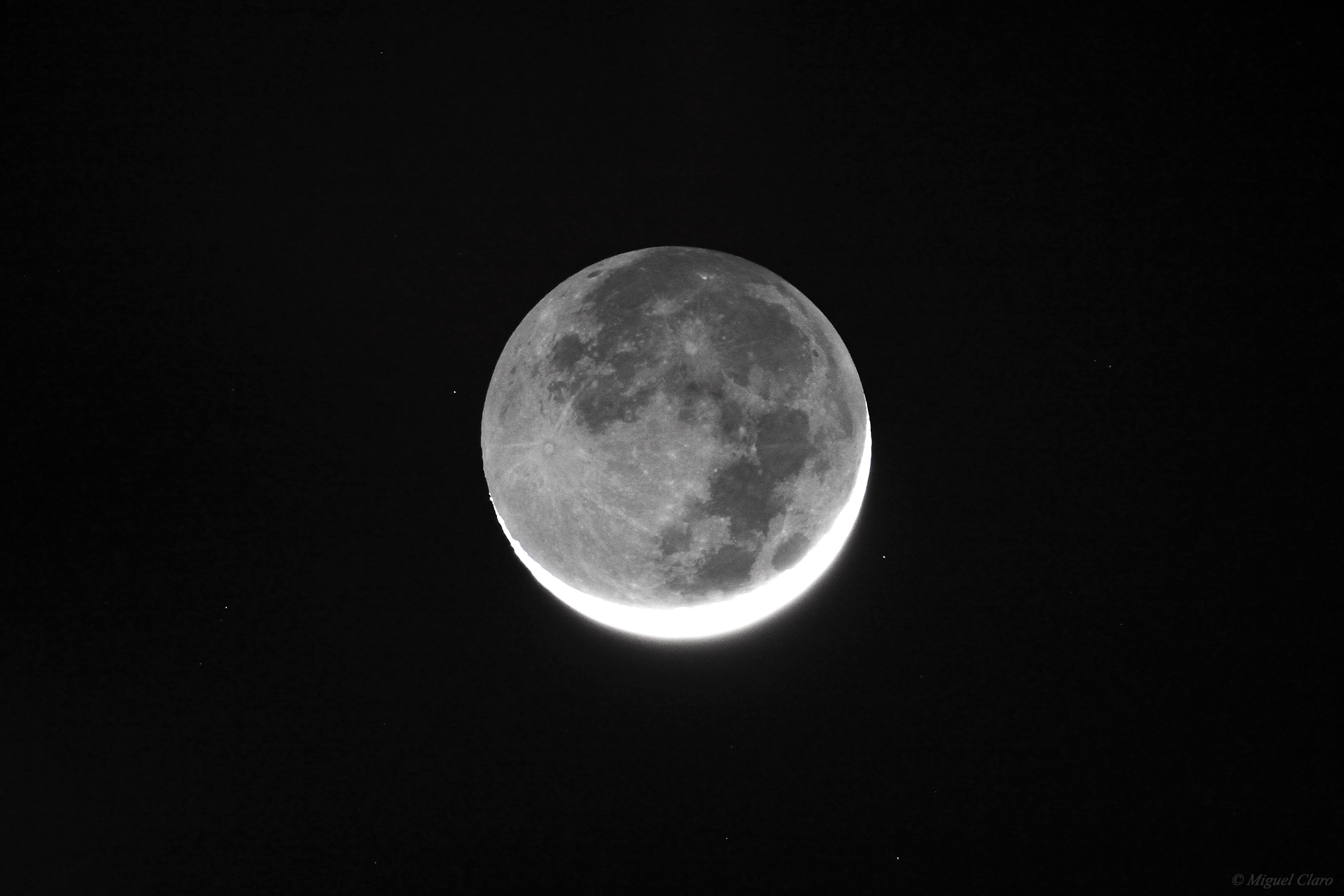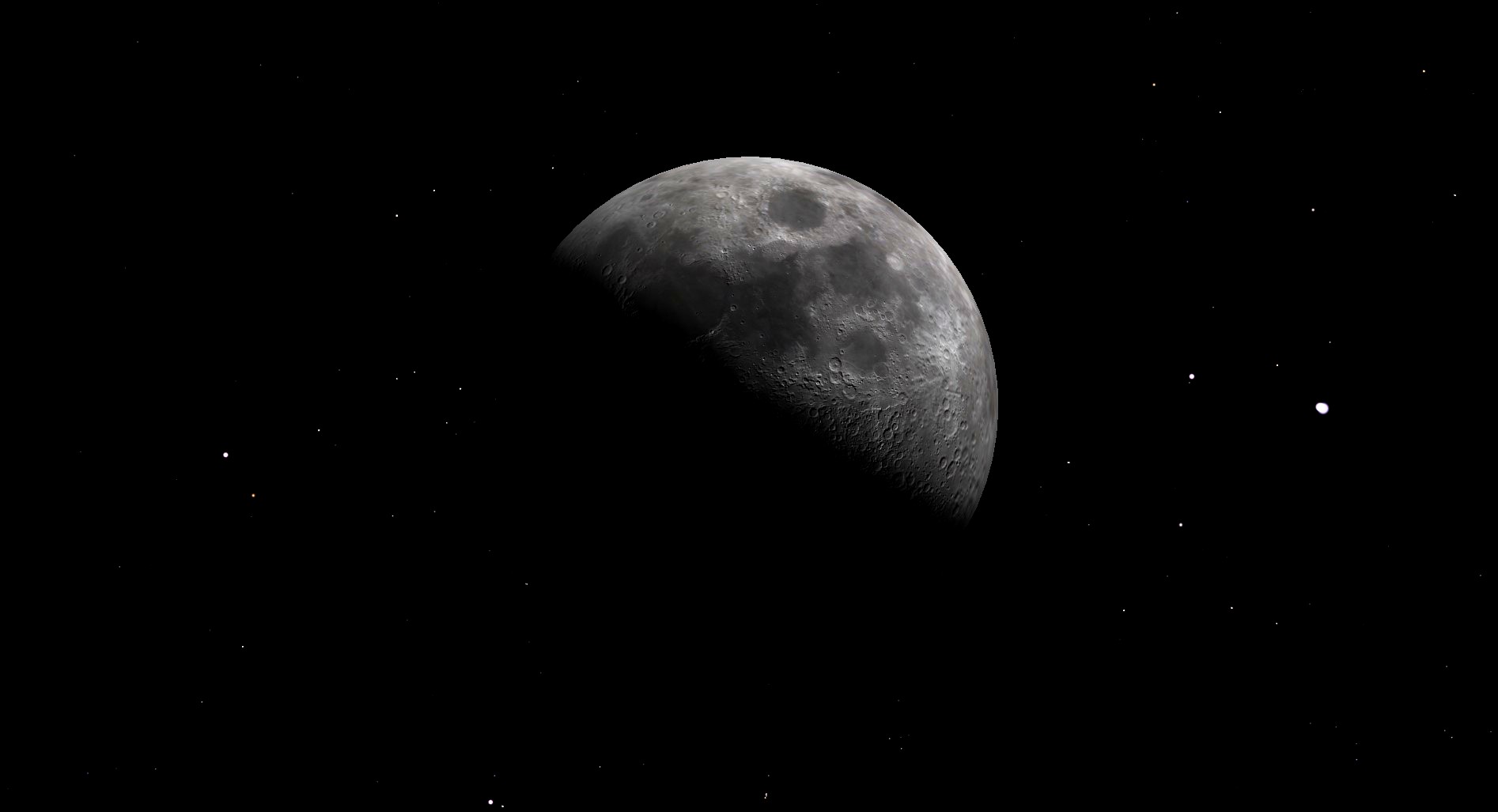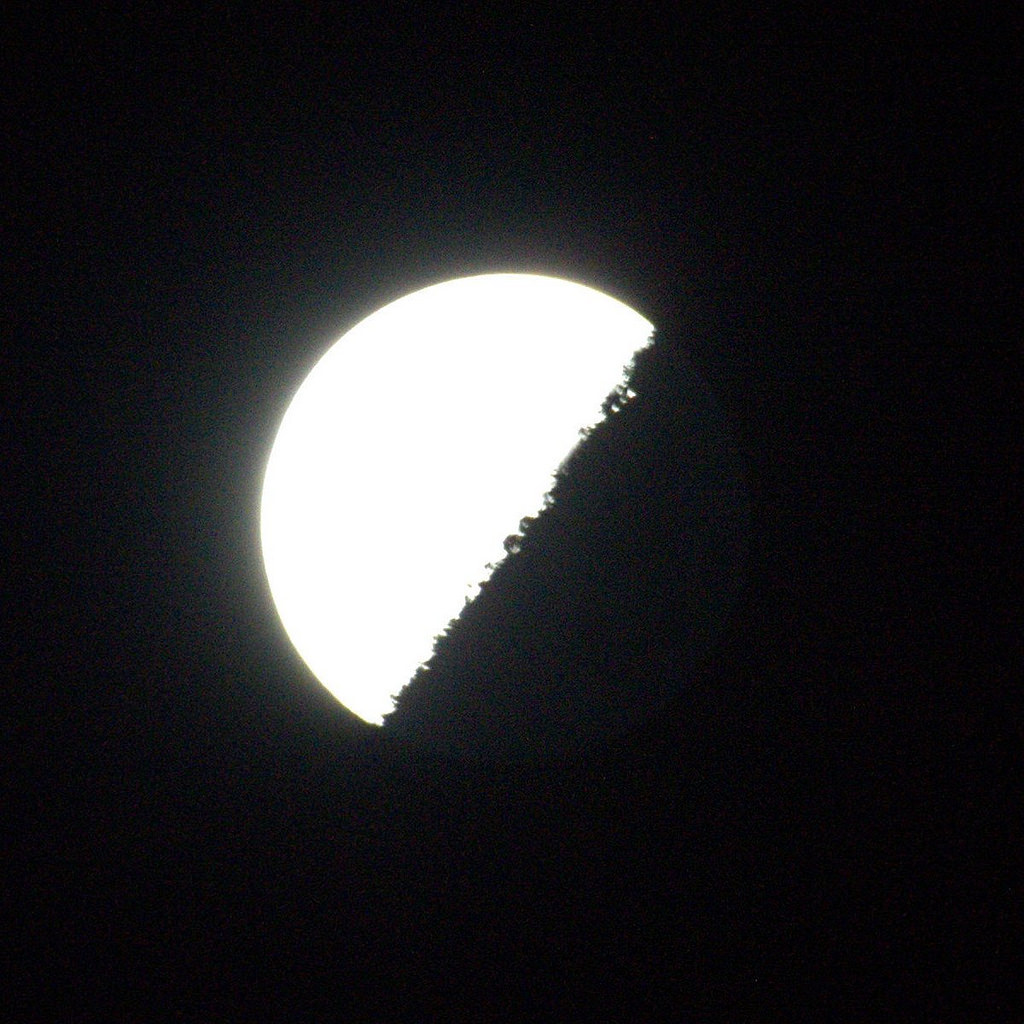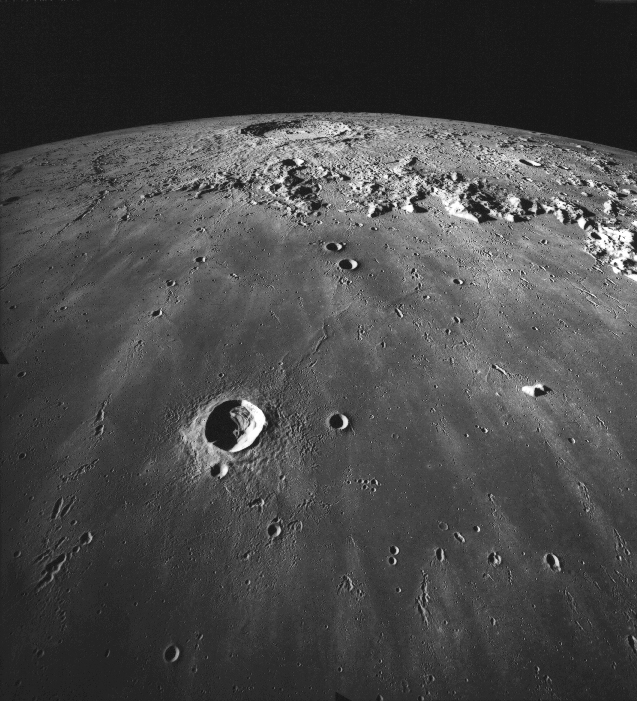Sunrise at Copernicus crater: How to see the 'Monarch of the Moon'
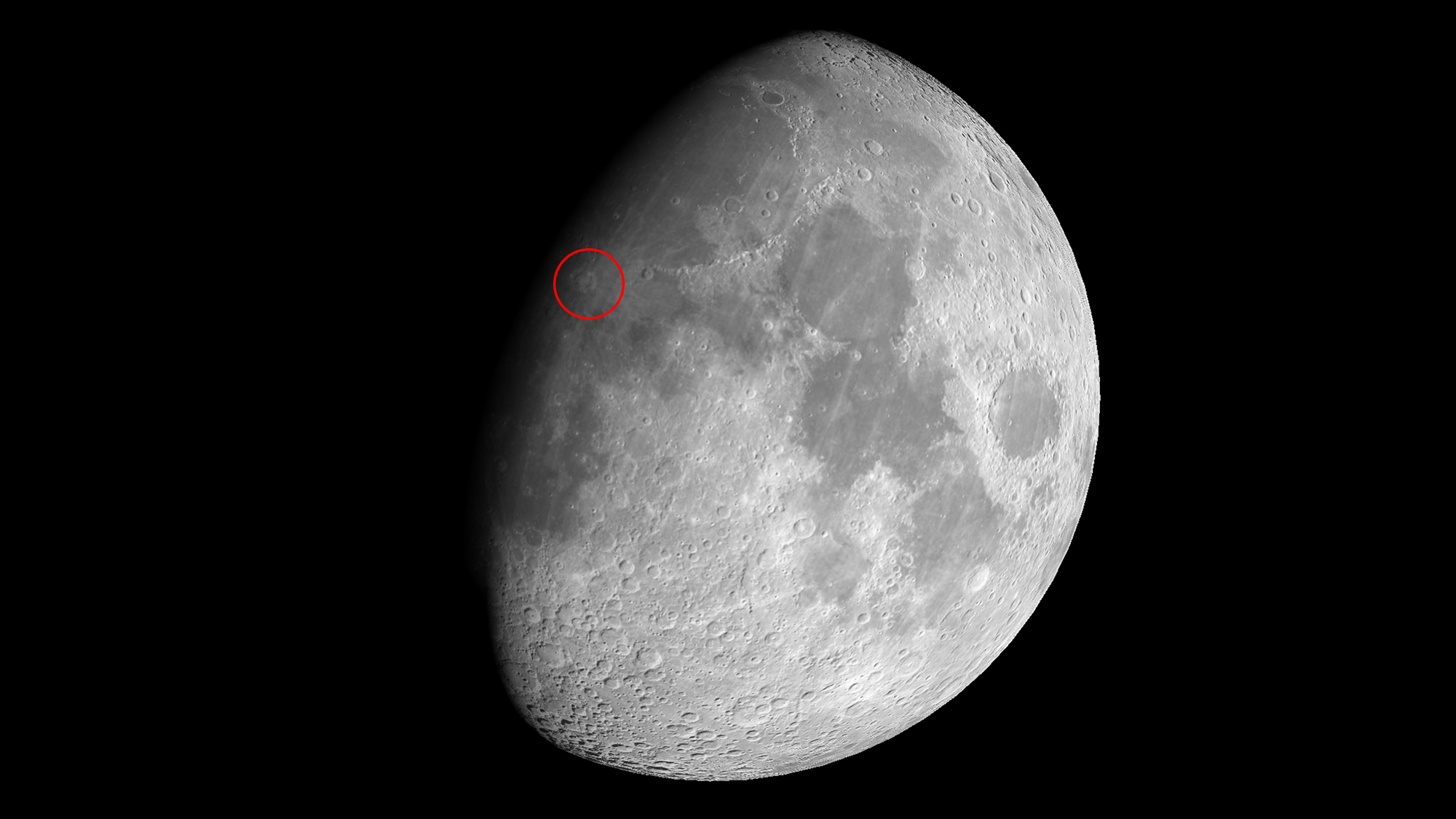
To the owner of a small telescope the moon is more interesting than anything else in the sky, because it's close enough to be seen really well. Even binoculars will show features on its surface. But you don't need a telescope to enjoy the moon. Even a casual glance at it on a nightly basis reveals its path through the zodiacal constellations, its relentless progression of phases, frequent encounters with bright stars and planets, as well as occasional eclipses and unusual atmospheric effects.
On Thursday evening (Aug. 20), very low in the western sky, was a slender sliver of a crescent moon two days past new phase. This was a sky signal by which the ancients set their calendars. Astronomers have mapped the face of the moon by watching it over a period of time, as it waxes from new to full and wanes from full to old.
Related: Moon phases
In the moon's long morning (the moon takes 27.3 Earth days to rotate once), its face is lighted from the right side. The line of sunrise moves steadily across its face. Mountains climb out of the night as their peaks catch the first rays of sunlight. By noon the moon is full and the mountains are difficult to see. As the sun begins to set in the moon's afternoon, the moon is again lighted, this time from the left side, and its mountains cast black shadows.
Related: How to observe the moon (infographic)
The face of the moon, gradually revealed
The moon was new on Tuesday (Aug. 18) and effectively out of our view. Tonight (Aug. 21), about 45 minutes after sunset, you can catch a glimpse of a lovely thin crescent moon hovering just above the horizon, slightly south of due west.
As the moon climbs the western sky this week, watch it with binoculars, which will greatly enhance the view of the phenomenon known as "Earthshine" — the waxing crescent moon appearing as a thin arc of yellowish-white light enclosing a ghostly bluish-gray ball.
Breaking space news, the latest updates on rocket launches, skywatching events and more!
Actually, for at least several nights, up to nearly a week after the new moon, sunlight reflected from Earth illuminates the night side of the moon, making its whole disk visible. Here is one of nature's beautiful sights, and IT fits the old saying: "the old moon in the new moon's arms."
Lunar features were named, sometimes fancifully, by astronomers beginning with the Italian astronomer Giovanni Battista Riccioli in 1651. Dark, smooth areas were thought to be water features, and so were called seas (mare in Latin). Mountains were commonly named for earthly ranges. Craters were named for prominent early philosophers and scientists. Having a crater named for you is a mixed blessing: it's a big honor, but you usually have to be dead.
On Thursday (Aug. 20), Mare Crisium, the Sea of Crises, enjoyed sunrise. On Friday, the sun shines on Mare Fecunditatis, the Sea of Fertility. Then on Saturday the sun rises on Mare Nectaris, and Thursday (Aug. 27) is dawn for Mare Tranquillitatis, the Sea of Tranquility, landing site of the historic Apollo 11 mission.
Best time to watch the moon
The moon will pass through first-quarter phase on Tuesday (Aug. 25) at 1:38 p.m. EDT (1738 GMT). At that moment, the moon will appear exactly 50% illuminated; its right or western side will be lit up, while its left or eastern side will still be in darkness.
When the sky becomes sufficiently dark that evening, close examination will reveal that our natural satellite is no longer in a "half-moon" phase. For by then, the moon will actually be a little more than half illuminated — 53% to 54% to be exact; so actually, it will be a waxing gibbous phase. Look to the moon's lower left that evening and you will see the bright reddish star Antares marking the heart of the scorpion of the zodiacal constellation of Scorpius.
We might naturally assume that when half of the moon's disk is illuminated, we would get half as much light as we get at full moon. Actually, we get only one-ninth as much. The reason is that much of the moon's surface is covered by shadows of mountains and craters, and therefore considerably less than half of its disk is illuminated by the sun. The moon is a little brighter at first quarter than at last quarter since some parts of the moon reflect better than others.
The light/dark boundary, called the terminator, is the best place to look, because the mountains cast the longest shadows in the rising sunlight. The moon has always been a prime target for telescope observers everywhere and shows amazing detail in even the smallest telescope. Even binoculars will show the mare or "seas," mountain ranges and ringed plains, as well as the great craters, while with a telescope of only 3-inch (8 centimeters) aperture you can see practically everything as clear as the very best Earth-based photos.
Related: How to observe the moon with a telescope
Most observers agree that the very best time to view the moon is in the two- or three-day interval following first quarter phase. The moon is then in a good position for evening study with most of its major features visible, while not overly bright to cause a loss of detail through glare.
In fact, when the moon is full, its mountains cannot clearly be seen; there are no shadows visible to create relief against which the mountains can be seen. A full moon appears flat and one dimensional. Through a telescope, features near the terminator stand out in bold, broken and jagged relief; shadows are strong and details are more easily seen. Sometimes you can even notice bright specks of light where high mountains catch the light of the rising sun before it has reached the plains below.
'The Monarch of the Moon'
On Thursday (Aug. 27), sunrise will come to one of the most noteworthy craters visible on the lunar surface. That's Copernicus crater, nicknamed the "Monarch of the Moon" by lunar cartographer Thomas Gwyn Elger. Copernicus is believed to be a lunar impact crater, formed by the collision from the fragment of an asteroid some 800 million years ago.
It's a circular crater measuring 58 miles (93 kilometers) across and 2.4 miles (3.8 km) deep. There are three isolated mountain peaks that stand roughly 3,900 feet (1,200 meters) high. Surrounding Copernicus is a ray system that extends outward in all directions for about 500 miles (800 km). The rays are comprised of radial streaks of fine ejecta thrown out during the formation of Copernicus and look somewhat like spokes coming from the hub of a wheel.
The sun will first touch the western (right) edge of the rim of Copernicus around 8 a.m. EDT (1200 GMT). The moon will not be visible from North America at that time, but later in the afternoon if you train binoculars or a small telescope on the moon, you will readily see Copernicus just to the right of the terminator. The inner part of the crater will still be in darkness, but its outer extremities will be in full daylight. Within a few hours, even the interior will be basking in sunlight and on Friday (Aug. 28), the ray system will also be in full daylight and very conspicuous.
Early telescopic observations showed how lunar mountains cast long and distinct shadows at sunrise and sunset, leading early observers to believe the lunar mountains were extremely precipitous. And yet, they are not so spectacular if one actually works out the geometry of the projections. The moon's radius is only about one-quarter that of our Earth, so the horizon falls away faster. An astronaut standing in the center of the crater Copernicus would not be able to see its 12,000-foot walls just 29-miles (46 km) away.
So, if you have binoculars or a small telescope, be sure to train it on the moon on Thursday evening and look right along the terminator and there you will find Copernicus. You can't miss it!
Joe Rao serves as an instructor and guest lecturer at New York's Hayden Planetarium. He writes about astronomy for Natural History magazine, the Farmers' Almanac and other publications. Follow us on Twitter @Spacedotcom and on Facebook.

Joe Rao is Space.com's skywatching columnist, as well as a veteran meteorologist and eclipse chaser who also serves as an instructor and guest lecturer at New York's Hayden Planetarium. He writes about astronomy for Natural History magazine, Sky & Telescope and other publications. Joe is an 8-time Emmy-nominated meteorologist who served the Putnam Valley region of New York for over 21 years. You can find him on Twitter and YouTube tracking lunar and solar eclipses, meteor showers and more. To find out Joe's latest project, visit him on Twitter.
